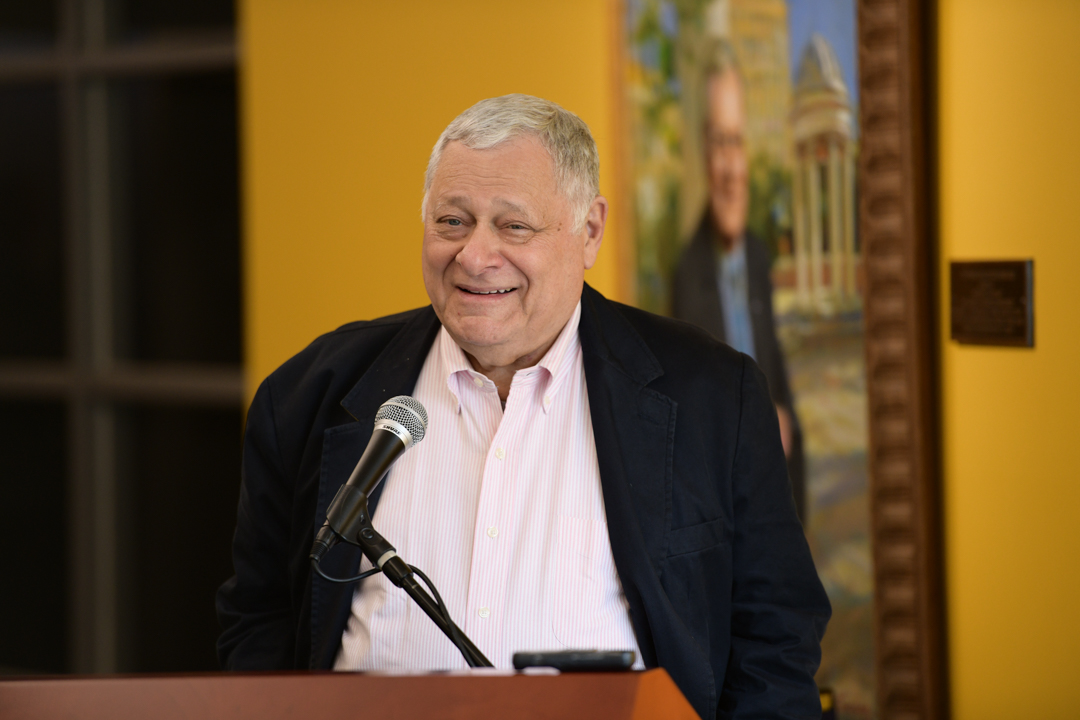By B.L. Wilson
Stephen J. Trachtenberg, president emeritus of the George Washington University and university professor emeritus, said he watched with fascination as the dean of Yale Law School shifted her public statements about the Supreme Court nomination of Yale Law alumnus Brett Kavanaugh.
For Dr. Trachtenberg, the dean’s eventual call for an investigation into allegations against the nominee represented the vicissitudes in the life of university leaders where every public utterance has potential consequences.
“My heart went out to [the dean of Yale Law School],” Dr. Trachtenberg said. “I said, ‘This too will pass.’ As I discovered, almost everything does if you stay in the job long enough.”
Dr. Trachtenberg was speaking Monday evening at the Media and Public Affairs building during the launch of “Leading Colleges and Universities: Lessons from Higher Education Leaders,” a new book on the lessons of leaders in higher education that he edited with special assistant Gerald B. Kauvar and E. Gordon Gee, the president of West Virginia University. The event was hosted by the Trachtenberg School of Public Policy and Public Administration (TSPPPA).
The book follows another written in 2014 about university presidents who lost their jobs, titled “Presidencies Derailed: Why University Leaders Fail and How to Prevent It.”
“Leading Colleges and Universities,” Dr. Kauvar said, “is not an adjective. We’re not telling you which ones are the best and how to figure that out. It’s about leading.”
The book features essays from present and former university presidents from different types of institutions across the country. It is divided into four parts: getting started, internal challenges, external challenges and personal challenges.
It addresses a wide range of financial, social and cultural issues that have besieged colleges and university presidents in recent years from collegiate athletic scandals, freedom of speech debates, claims and counter claims of unwanted sexual contact to controversial donor gifts.
It’s less of a how-to book than a collection of anecdotes and experiences that provide examples of leadership. Each contributor was asked to answer five questions: What do you wish you had known before you took the job; what do you wish you had done that you didn’t do; what did you do that you wish you hadn’t done; what do you wish you hadn’t known when you finished; and how did you know when it was time to stop?
Dr. Kuvar said his favorite answer to the last question was, “When they changed the locks on the door.”
Dr. Gee, who was brought in as a collaborator, has served at several institutions of higher learning, including Ohio State, Vanderbilt University, Brown University and the University of Colorado.
“It’s not about being a successful university president. It is about answering questions that all of us have, but are fearful to ask,” he said, noting that the role of the university presidency has changed dramatically as universities ceased to be places of free wheeling ideas, opportunities for discussion and occasions for merit.
“All of us have the same problems and many of those problems can be solved by the wisdom of others, but also when we can collectively talk about these issues, then we do find ways to solve these problems,” he said
In the book’s first essay on becoming a university president, William Kirwan relates his experience on assuming the presidency of the University of Maryland-College Park, where he had served as chair of the mathematics department and provost, a typical path to a college president’s office.
Dr. Kirwan suggests those who have served internally should find ways to represent the university externally in preparation for becoming the university’s public face “where they become like butterflies bursting out of their cocoons.”
Finding consensus became the challenge when he moved to Ohio State University where he experienced a sense of isolation and loneliness that he had not experienced at Maryland.
Addressing TSPPPA faculty and staff, alumni from GW and WVU, family and friends, Dr. Trachtenberg described the new book as “some great stories about universities.”
“It is a grander narrative about the leadership of institutions like [GW] and hope for the sorts of endeavors people in this room have committed their lives to—teaching, learning and scholarship,” Dr. Trachtenberg said.



